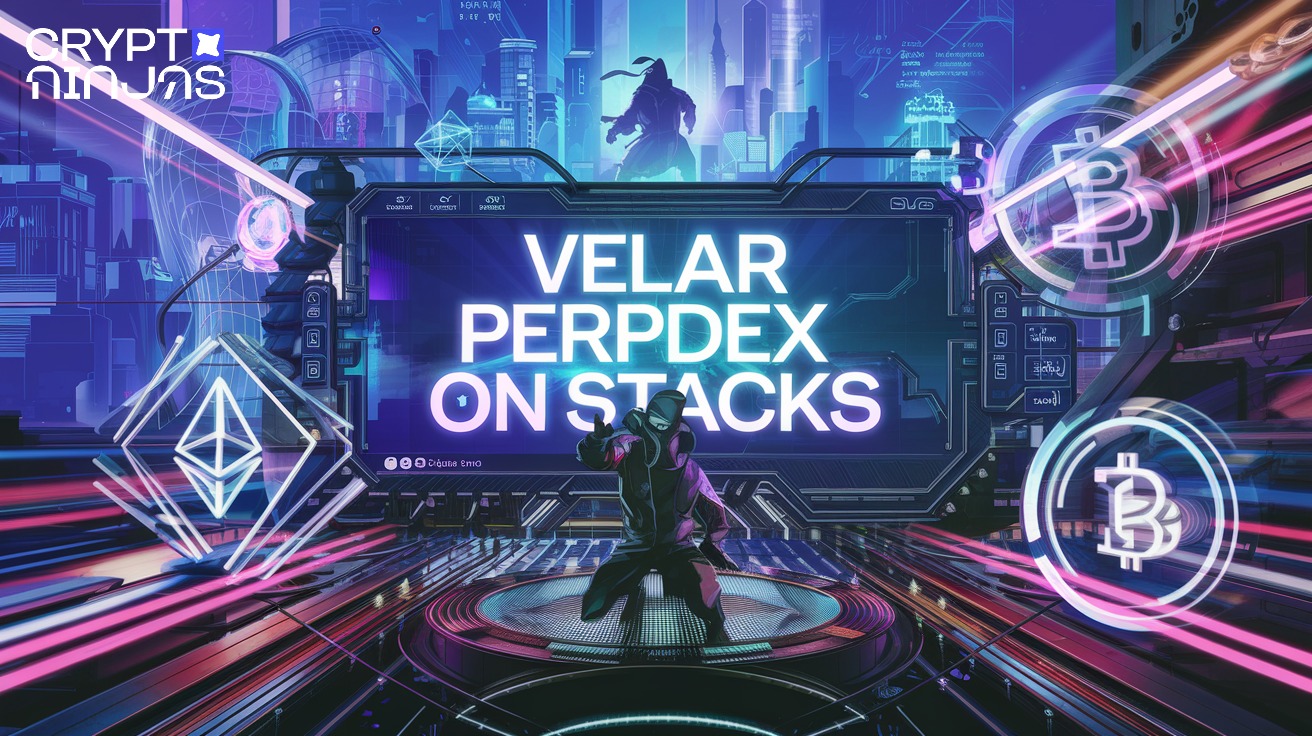Key Takeaways
The introduction of the first Bitcoin-native perpetual decentralized exchange (PerpDEX) by Velar on the Stacks platform is a significant development for the integration of Bitcoin into decentralized finance (DeFi). This PerpDEX allows for leveraged trading on Bitcoin, offering functionalities that mirror those found in Ethereum-based DeFi platforms, all while benefiting from Bitcoin’s inherent security. By utilizing Stacks’ Layer-2 solution, Velar manages to preserve Bitcoin’s robustness without the need for smart contracts in decentralized trading. This launch represents a pivotal moment in Bitcoin’s acceptance within the DeFi landscape, bridging the gap between passive Bitcoin holders and active DeFi participants. As Bitcoin-focused DeFi solutions rise in popularity, the success of Velar could inspire further advancements in this area.
Diversifying Bitcoin’s Utilization in DeFi
Historically, Bitcoin has been viewed primarily as a store of value rather than an active participant in decentralized finance (DeFi). In contrast to Ethereum, which supports smart contracts and a diverse range of DeFi applications, Bitcoin’s architecture has limited its interaction with this sector. However, the launch of Velar’s PerpDEX on Stacks is challenging this traditional view. By offering a Bitcoin-native perpetual decentralized exchange, Velar enables users to engage in leveraged trading and perpetual contracts directly on the Bitcoin network. This evolution significantly enhances Bitcoin’s financial functionalities and positions it to compete more directly with Ethereum-centric DeFi platforms such as dYdX and GMX.
Velar PerpDEX on Stacks – Bitcoin DeFi Trading Interface
Unlike centralized trading platforms that necessitate trust in third-party intermediaries, Velar’s PerpDEX operates on-chain, allowing users to retain full control over their assets while benefiting from Bitcoin’s security features.
How Velar’s PerpDEX Works
Velar’s PerpDEX utilizes Stacks, a Layer-2 network for Bitcoin, to facilitate smart contract capabilities without modifying Bitcoin’s foundational layer. This Layer-2 architecture ensures that transactions are:
- Secured by Bitcoin: All trades and transactions ultimately settle on Bitcoin’s blockchain.
- Decentralized: There is no reliance on centralized intermediaries, which reduces counterparty risk.
- Cost-Efficient: The Layer-2 approach enhances transaction throughput and minimizes fees.
Perpetual contracts, which are essential for leveraged trading in Bitcoin markets, are now accessible through Velar’s PerpDEX, allowing traders to take leveraged positions without resorting to centralized exchanges like Binance or Bybit. Additionally, the platform features liquidity pools, enabling users to deposit Bitcoin and earn yields by providing liquidity to leveraged traders, thereby enhancing capital efficiency and increasing trading volumes, resulting in a more dynamic Bitcoin ecosystem.
The Significance of Velar’s Launch to Bitcoin DeFi
The launch of Velar’s PerpDEX marks a crucial milestone for Bitcoin’s ambitions in the DeFi space. Previously, Bitcoin’s DeFi user base largely relied on wrapped tokens such as WBTC (Wrapped Bitcoin) on Ethereum or early lending protocols like Sovryn. With a native perpetual decentralized exchange, Velar illustrates Bitcoin’s potential to host advanced DeFi applications without the need to wrap or bridge assets to other networks. This advancement could:
- Attract increased liquidity to Bitcoin’s DeFi ecosystem.
- Encourage the development of Bitcoin-native financial products.
- Enhance Bitcoin’s appeal as an active participant in the DeFi economy rather than merely a passive investment.
While Ethereum has long been the leader in DeFi, Bitcoin is gradually making its presence felt, with projects like Velar paving the way for a new era of Bitcoin-driven decentralized finance.
Challenges and the Road Ahead
Despite the promising prospects of Velar’s PerpDEX and Bitcoin’s expanding DeFi landscape, several challenges remain:
- Scalability: Even with improvements from Layer-2 solutions such as Stacks, they still depend on Bitcoin’s slower base-layer confirmation rates.
- Liquidity Growth: Ethereum-based DeFi platforms currently enjoy a substantial liquidity advantage, and attracting liquidity to Bitcoin’s DeFi sector will be essential over time.
- User Adoption: Many Bitcoin holders continue to perceive BTC primarily as a long-term store of value rather than a tradable asset. Shifting this mindset is crucial for the broader adoption of DeFi.
Nevertheless, as the demand for decentralized trading and financial services centered around Bitcoin grows, Velar’s PerpDEX may signal the dawn of a transformative phase for Bitcoin in the DeFi arena.

